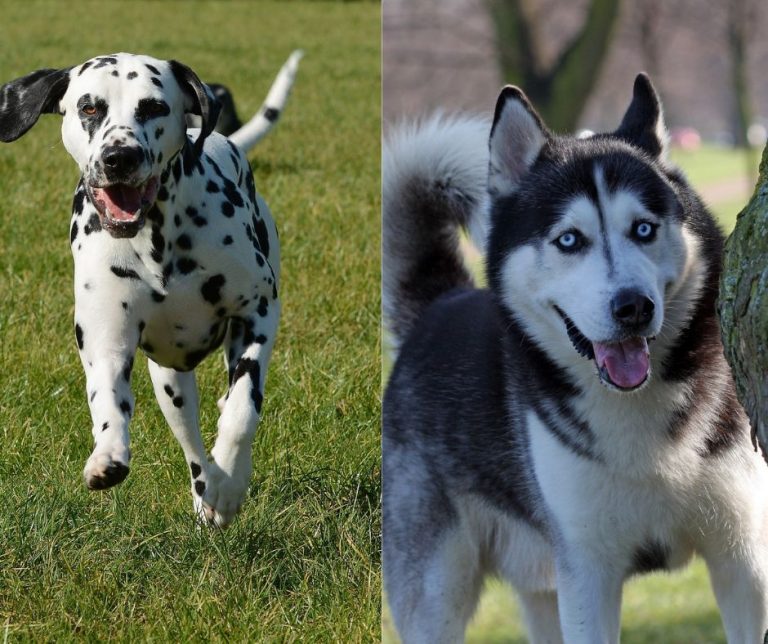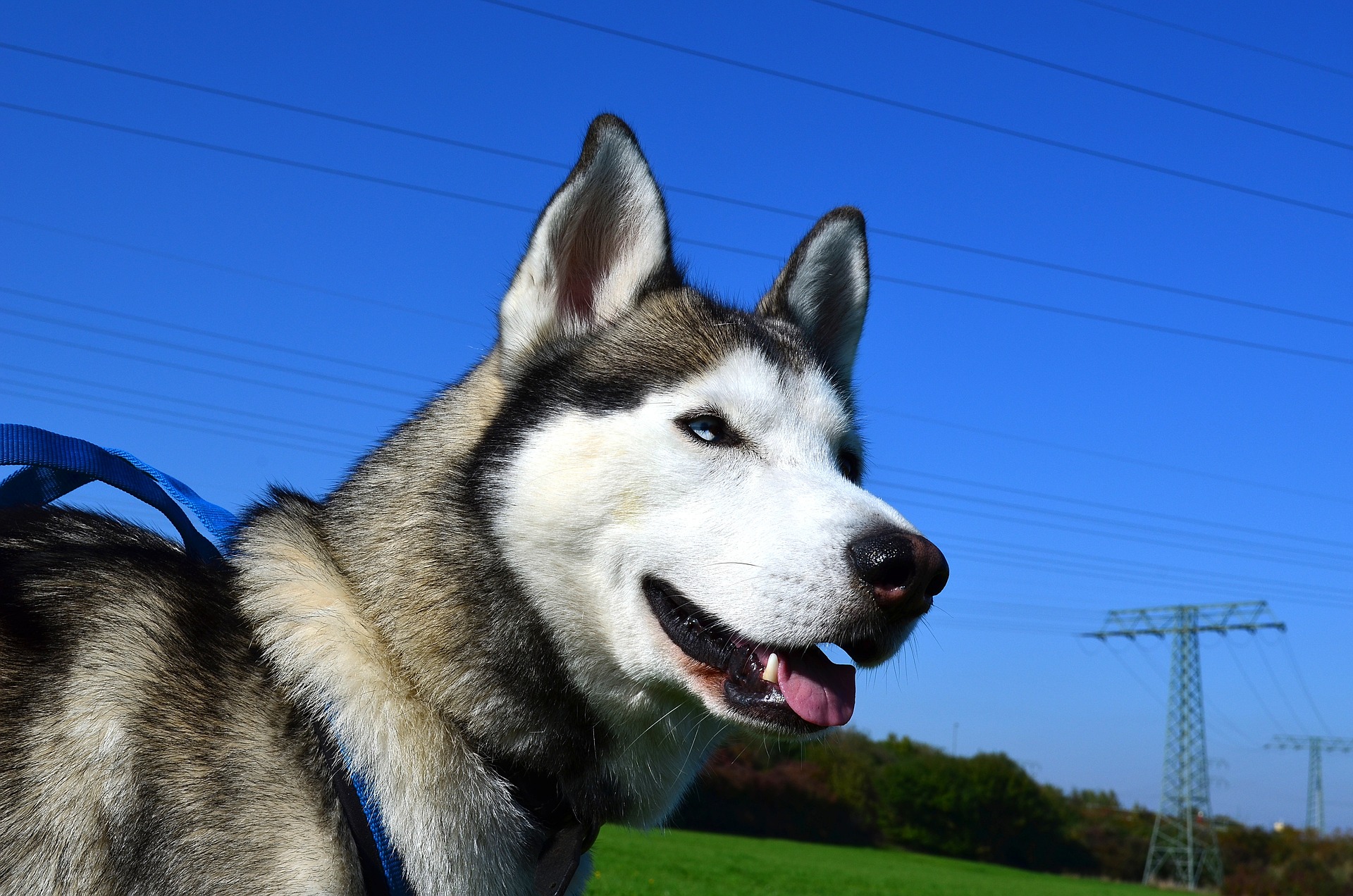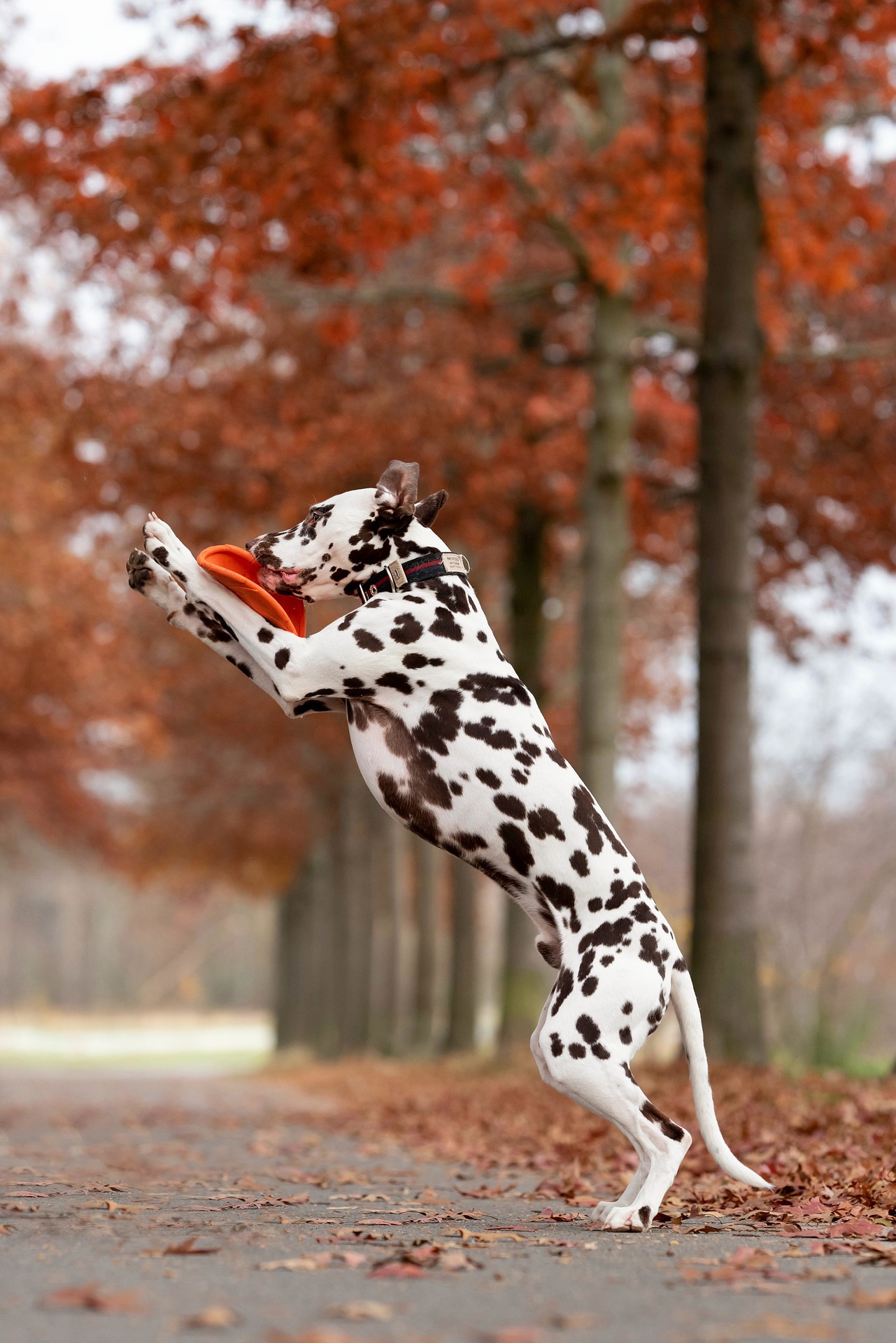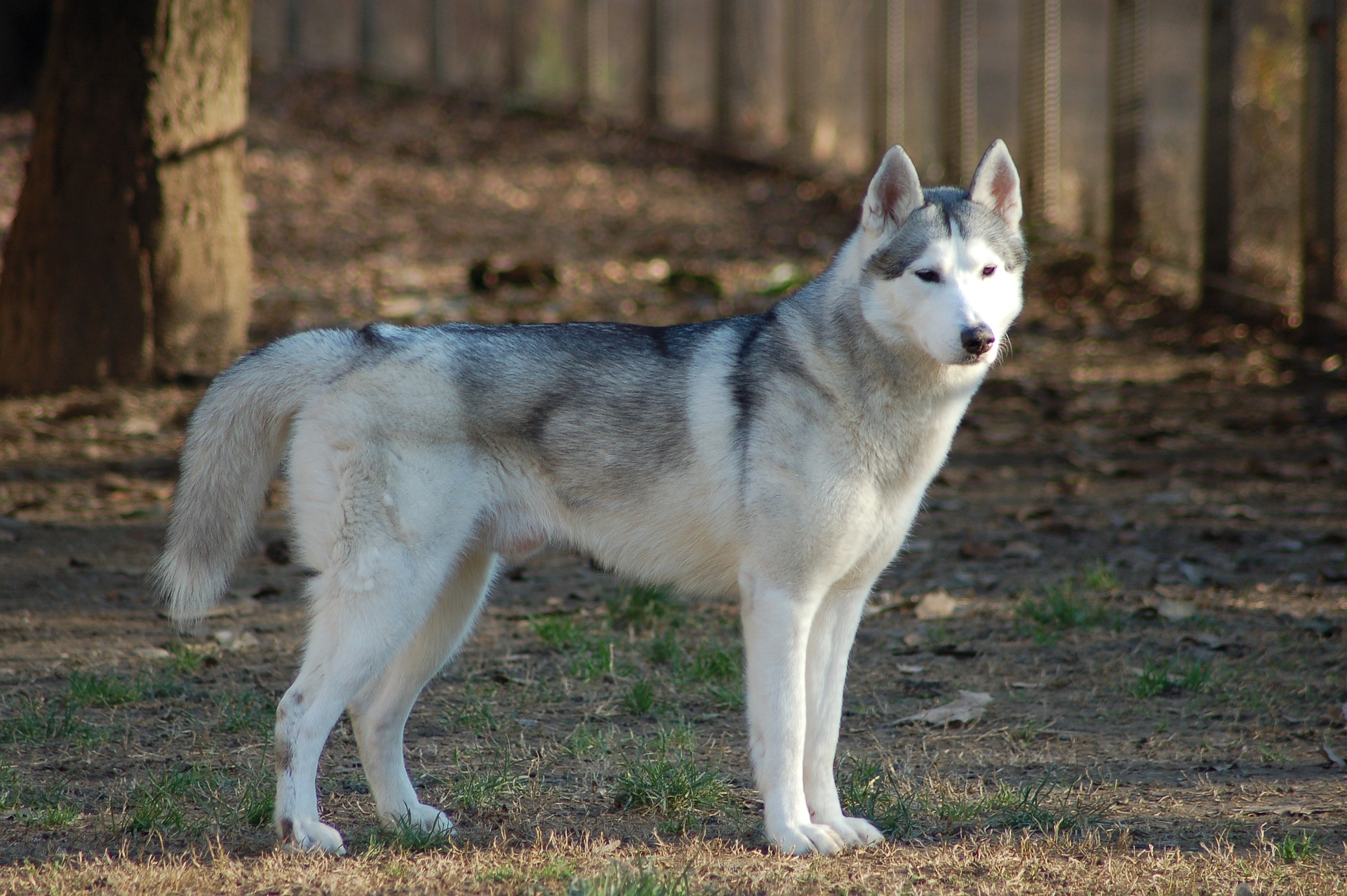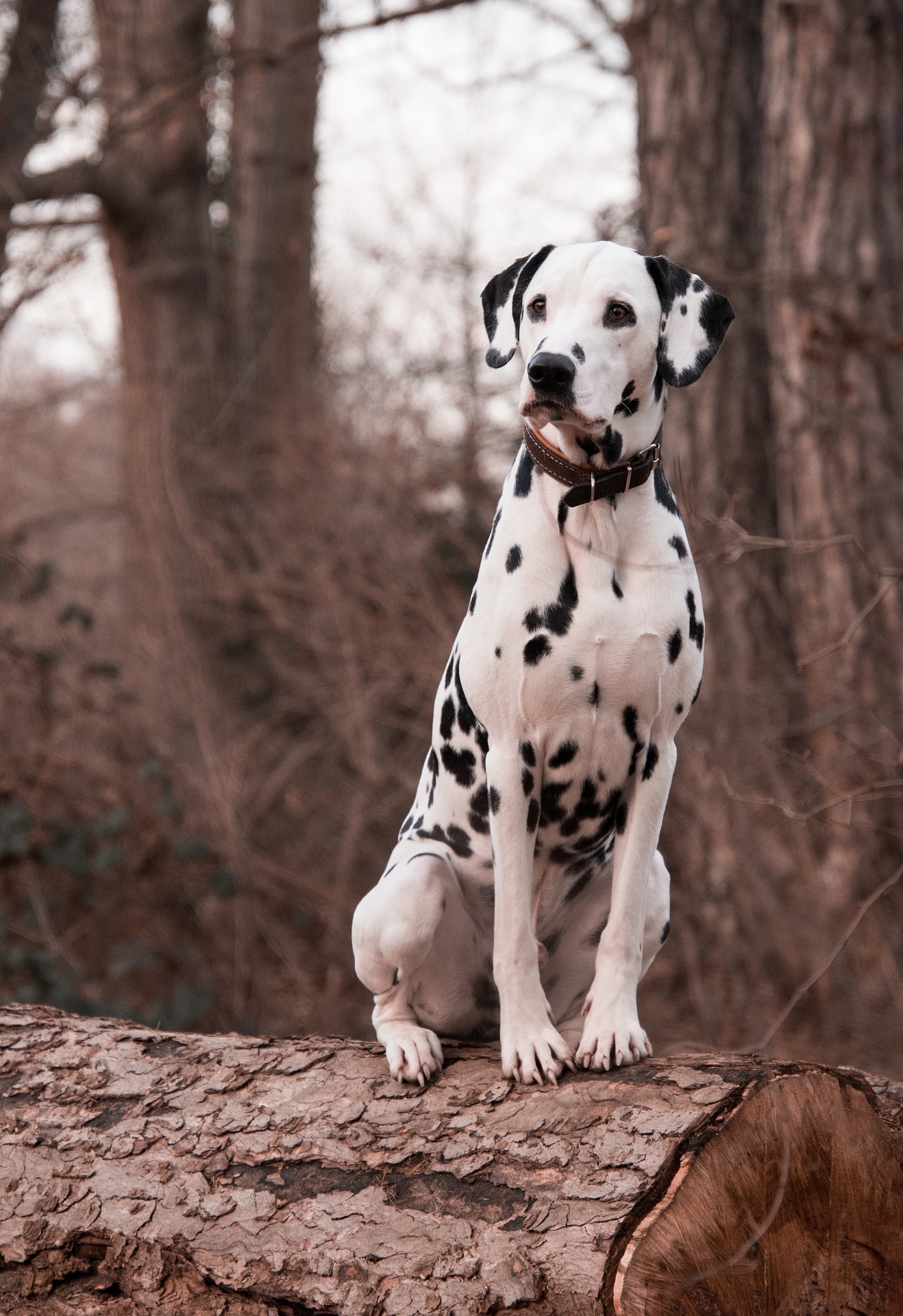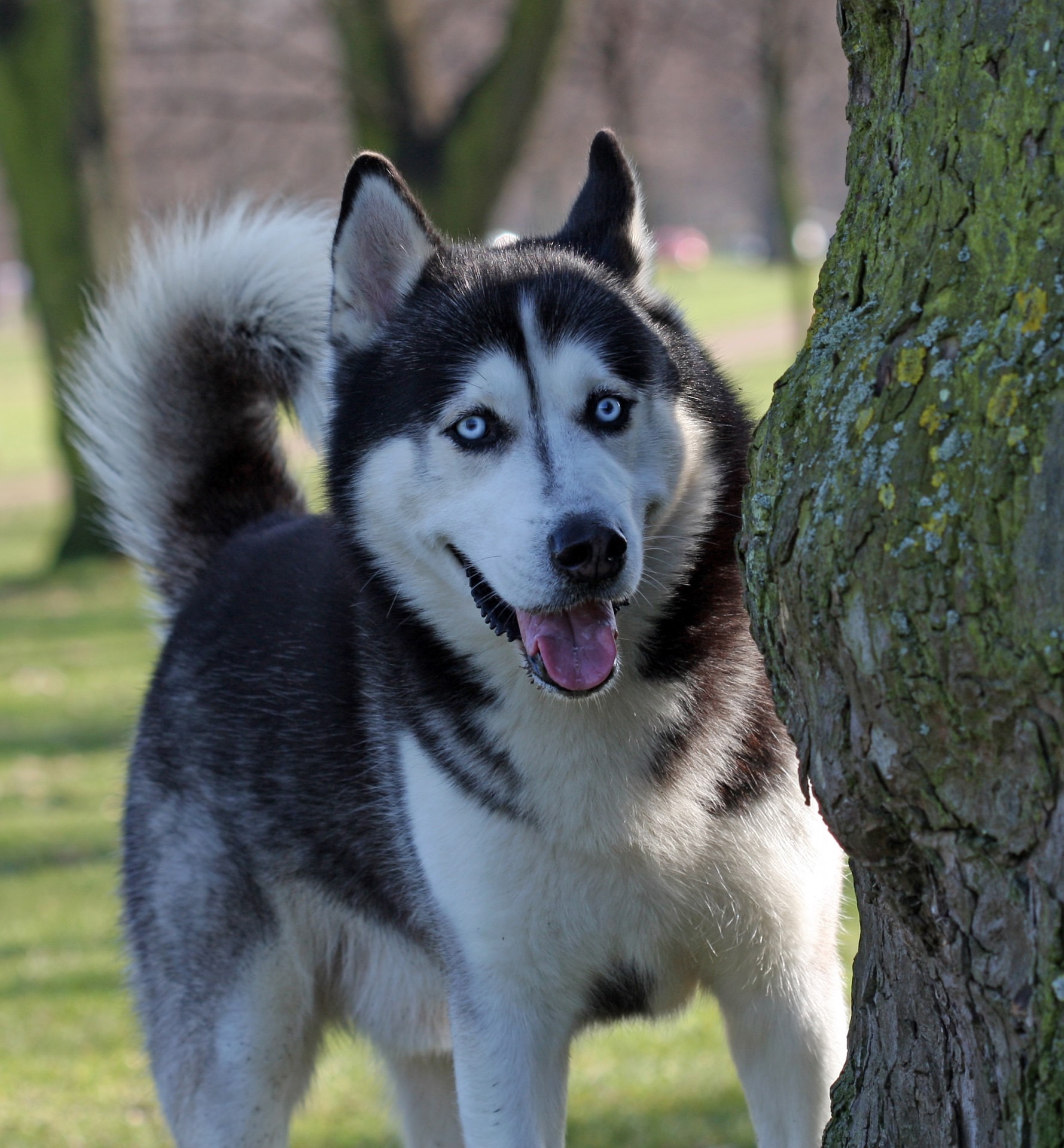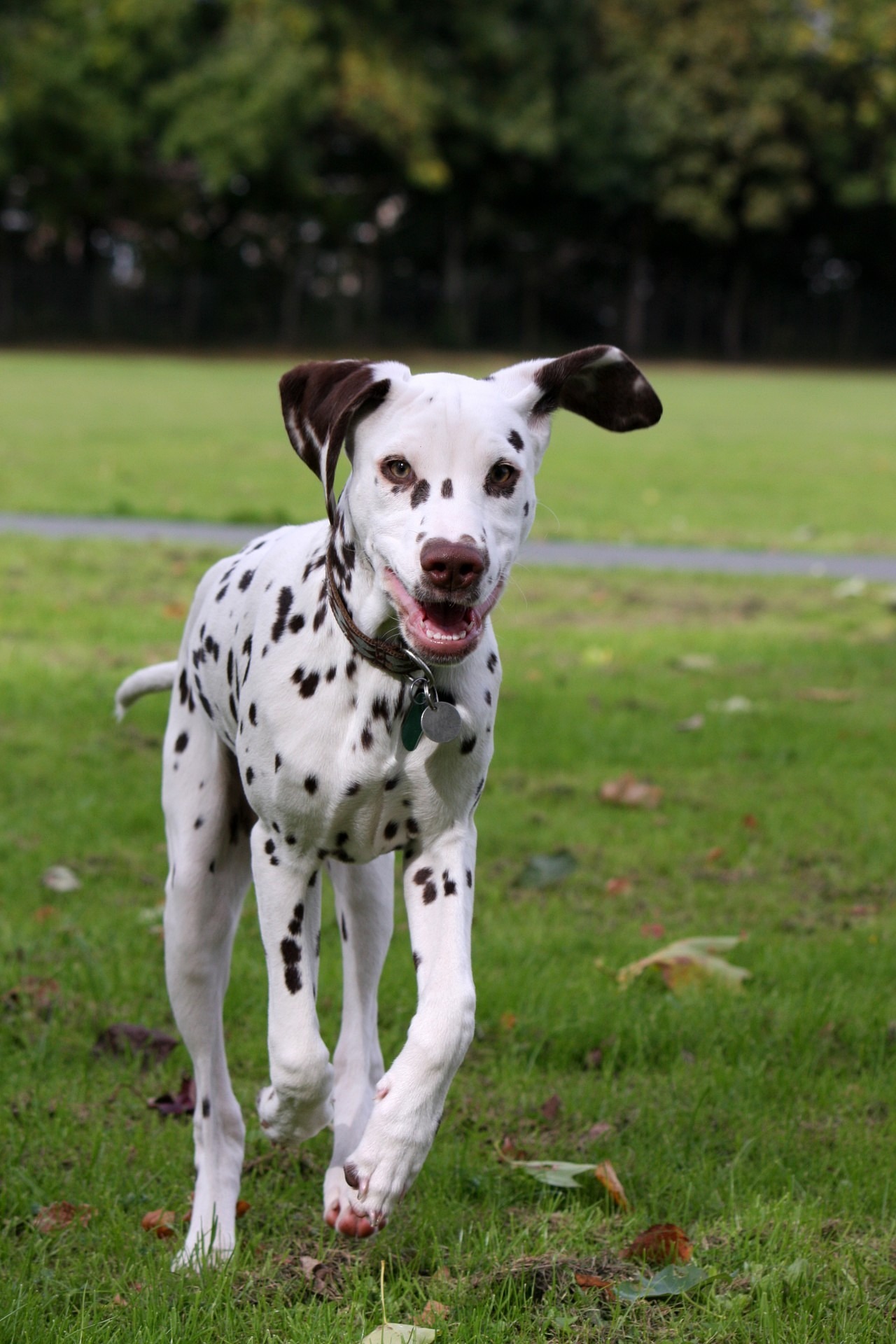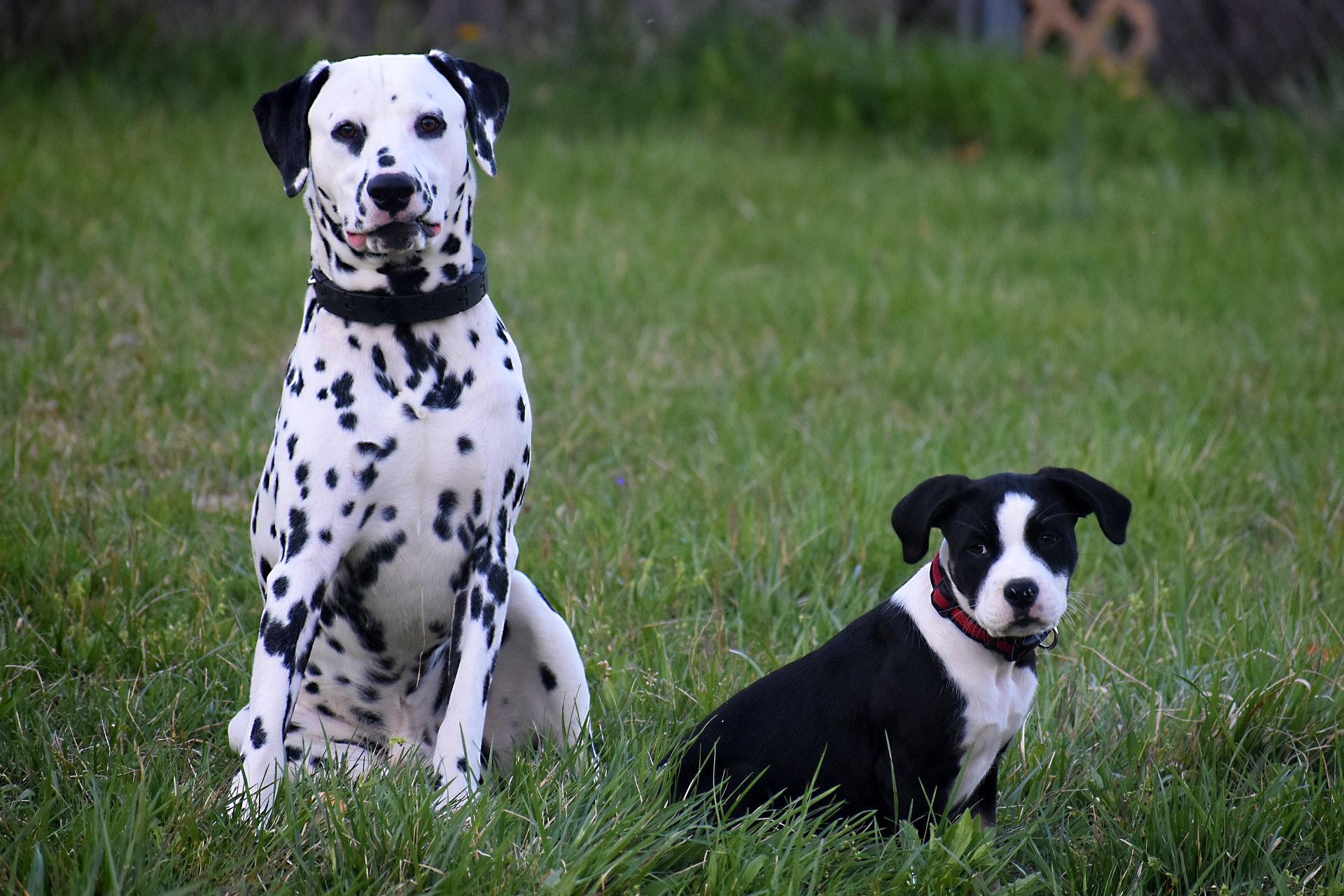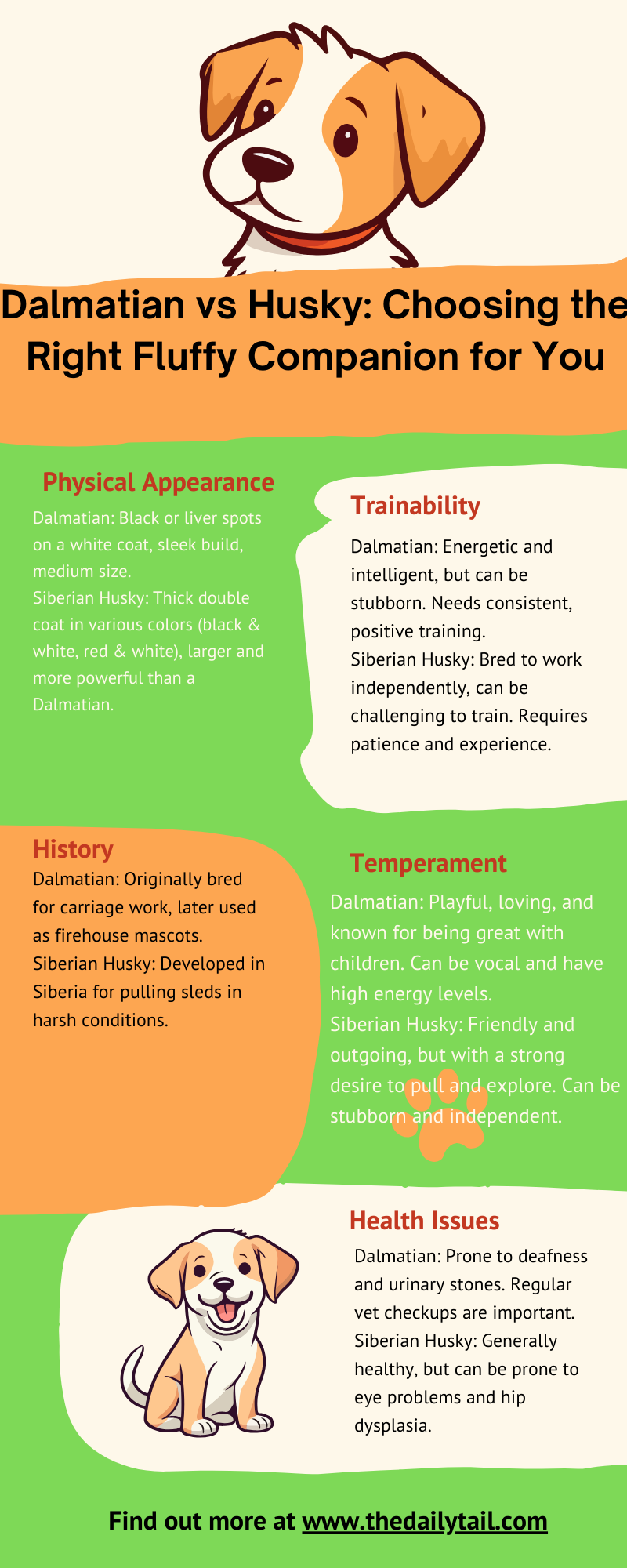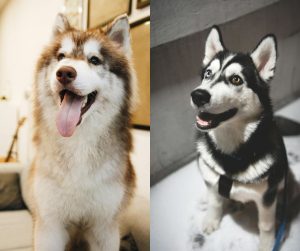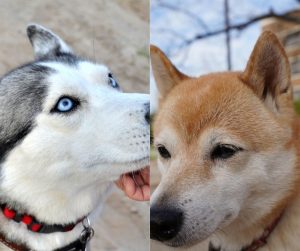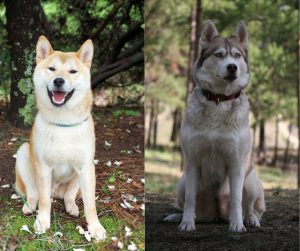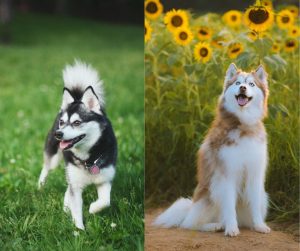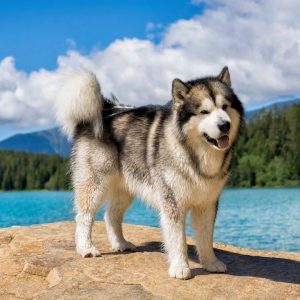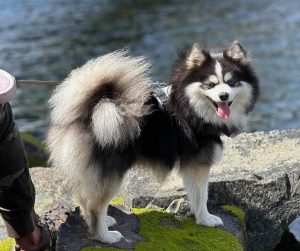As a dog owner for many years, I’ve always been charmed by the unique personalities of different breeds. There are two that stand out for different reasons. One is the Dalmatian, a spotted dog with bundles of energy. The other is the Siberian Husky, a dog many recognize for its blue eyes. And the fun fact is that not many Huskies have blue eyes.
I never recommend getting a dog just by its looks. But you cannot help but argue these two are definitely puppies that will increase the appeal of your household.
Choosing between the spotted wonder and the blue eyes of the Husky can be a tough dilemma for any dog lover. Both breeds boast unique characteristics and histories that make them stand out. Let’s take a look at some appearance differences according to the American Kennel Club, but also at temperament and training differences.
The Dalmatian, with its distinctive spotted coat and regal carriage, has roots that trace back centuries in Europe. Renowned for their role as carriage dogs, their stamina and elegance were prized.
Conversely, Siberian Huskies, hailing from northeastern Asia, were bred by the Chukchi people for their endurance and capability to haul light loads over vast, snowy expanses.
While their origins and histories are important, potential dog owners are often more captivated by the personality and needs of these breeds.
Dalmatians are famous for their boundless energy and playful nature, thriving in active households.
Similarly, Siberian Huskies are pack-oriented canines with a spirited disposition, though they demand ample exercise and mental stimulation to prevent boredom-induced mischief.
Understanding the needs of these breeds extends to their care and health.
Dalmatians require regular grooming to maintain their coat and minimize shedding, and Huskies are known for their more intense grooming needs due to their thick, double-layered fur. Both have distinct exercise requirements to stay physically and mentally healthy. So, let’s take a deeper look into the Dalmatian vs Husky dog breed comparison.
Key Takeaways
- The Dalmatian and Siberian Husky have unique origins, with the former as carriage dogs and the latter as sled dogs
- Both breeds require active lifestyles, with significant exercise and mental stimulation
- Careful consideration of grooming needs, health, and training should guide potential owners in their choice
Origins and History
When it comes to the origins and history of the Dalmatian and the Siberian Husky, they share a journey that’s deep-rooted and colorful. They stem from vastly different parts of the world, with the Dalmatian originating in what’s now known as Croatia and the Husky coming from the cold climate of Siberia.
Dalmatian Origin
The Dalmatian originates from the historical region of Dalmatia, in modern-day Croatia. The breed is recognized for its unique white coat spotted with dark markings. They were originally used as hunting dogs and were later employed as carriage dogs due to their endurance and pace. Over the years, their versatility made them suitable for various roles, from being used for protection to performing as circus dogs, showcasing their intelligence and athleticism.
Husky Origin
On the other side of the world, the Siberian Husky dog breed’s lineage begins. This working dog breed was developed by the Siberian Chukchi people of eastern Siberia, a region notorious for its unforgiving climate. Huskies were primarily bred for sled pulling, vital for transportation in these areas where conventional vehicles could not traverse the icy terrain.
These dogs are known for their resilience and ability to withstand extreme cold, which made them indispensable to the Chukchi people and later, to others in North America where they were introduced in the early 1900s.
Physical Characteristics
When it comes to the Dalmatian vs Husky puppy, they’re both absolutely gorgeous and have some distinct features that set them apart. Let’s get right into what these breeds look like. When it comes to appearances of both dog breeds, it is the American Kennel Club that sets the standard.
Dalmatian Appearance
The Dalmatian puppy is known for its elegant frame and distinctive spots. You can’t miss the crisp white coat sprinkled with black spots, though some may have liver-colored spots too. They’re a picture of grace with a well-built, muscular body. On average, this spotted dog weighs about 45-70 pounds, and standing at the shoulder, it range from 19 to 24 inches tall.
- Size: Medium to large
- Weight: 45-70 lbs
- Height: 19-24 inches at the shoulder
- Coat: Short, dense, and glossy
- Colors: White with black or liver spots
Husky Appearance
Siberian Husky dogs make you think of wild, snowy locales with their piercing blue eyes and wolf-like looks. They sport a thick double coat to keep them warm in icy climates. Huskies can come in a variety of colors like black, grey, and red, and they weigh in slightly heavier than Dalmatians, at around 35-60 pounds for females and 45-60 pounds for males. Their height ranges from 20 to 23.5 inches at the shoulder.
- Size: Medium
- Weight: 35-60 lbs (female), 45-60 lbs (male)
- Height: 20-23.5 inches at the shoulder
- Coat: Thick double coat
- Colors: Variety, including black, grey, red
- Eye Colors: Often blue, can also be brown, or even one of each
Temperament and Personality
Choosing between a Dalmatian and a Siberian Husky is more than just a matter of looks; it’s about finding a furry friend whose temperament and personality match your lifestyle. These breeds are known for their high energy and affectionate nature, but they each come with their own unique quirks and charms.
Dalmatian Temperament
Dalmatians are more than just their iconic spots; they pack an energetic and friendly personality. These dogs were historically used as carriage dogs, which explains their high stamina and alert nature. Families love them for their playful and loyal demeanor, but remember, they are intelligent dogs that thrive with mental stimulation to prevent boredom.
- Energy Level: High; they thrive on exercise and playful activities
- Friendly: Yes, generally friendly with people and other dogs, but proper socialization is important
- Playfulness: Very; young Dalmatians can be especially bouncy
- Intelligence: High; enjoys and benefits from mental challenges
- Stubbornness: Can be independent; consistent and patient training is key
- Loving/Affectionate: Very; they are known to form strong bonds with their families
- Loyalty: Strong; they’re known to be devoted to their owners
Husky Temperament
Siberian Huskies, with their wolf-like appearance and enchanting eyes, bring a Spitz-type personality to the table. They’re energetic adventurers at heart, always ready for the next escapade.
Despite their friendly and affectionate nature, Huskies are known for their independent streak, which can sometimes be mistaken for stubbornness. They love being part of the pack, and they show a lot of love and loyalty towards their humans.
- Energy Level: High; they need lots of exercise to keep their adventurous spirit satisfied
- Friendly: Yes; they are generally welcoming to both people and other dogs
- Playfulness: Abundant; they often retain their playful traits well into adulthood
- Intelligence: Noteworthy; they’re clever and require engaging activities
- Stubbornness: Mild; they can be willful, but respond well to positive, consistent dog training
- Loving/Affectionate: Extremely; they are known for their ability to bond deeply
- Loyalty: Present; they are loyal, but their independent nature might not make them as likely to stick by your side like a Dalmatian breed
Exercise and Training Needs
When considering a Dalmatian or a Siberian Husky, remember that they’re not just stunning to look at; their high energy levels mean they thrive on exercise and mental stimulation. Regular and engaging physical activities are essential for their well-being.
Dalmatian Exercise Requirements
Dalmatians are the picture of grace and endurance. They’ve got energy for days and a natural inclination for activities that get their legs moving and their hearts pumping.
To keep a Dalmatian happy, plan for:
- Daily Exercise: Aim for at least 1 to 2 hours of physical activity per day. This can be broken up into shorter, more intense sessions or longer, moderate ones
- Variety of Activities: They love to mix it up with runs, hikes, or even canine sports like agility
Husky Exercise Requirements
Siberian Huskies, with their roots as sled dogs, are the epitome of stamina and strength. They’re intelligent, which means they catch on to training quickly, but they also need to burn off that high energy. Keep a Husky in tip-top shape with:
- Consistent Training: They respond well to consistent, positive reinforcement dog training methods. Challenges that stimulate their intellect can be as rewarding as physical exercise
- Substantial Exercise: Look to give a Husky at least 2 hours of vigorous activity every day. Huskies enjoy long runs and pulling activities that mimic their sled-pulling origins
Health and Care
When caring for either a Dalmatian or a Siberian Husky, prospective dog owners need to be aware of specific health issues and grooming needs unique to each breed. These medium size dog breeds require regular maintenance, and understanding their respective health challenges is crucial for a happy, healthy dog.
Dalmatian Health Issues
Dalmatians are generally healthy, but they can be prone to certain conditions such as deafness and urinary stones. It’s vital for them to undergo hearing tests as puppies since about 30% may be born with partial to complete deafness.
Hip dysplasia is also a concern for Dalmatians. Hip dysplasia is an inherited condition where the thigh bone doesn’t fit snugly into the hip joint. To manage these potential issues, regular check-ups and appropriate screening should be part of their care routine.
In terms of coat maintenance, Dalmatians have short fur that sheds moderately year-round and more heavily during the seasons. They’ll benefit greatly from weekly brushing to minimize shedding and keep their coat shiny.
As for skin, they can sometimes develop skin allergies, so choosing the right diet and grooming products is important to avoid irritation.
Husky Health Issues
Siberian Huskies are known not just for their distinctive looks and boundless energy but also for their robust health. That said, they’re not immune to health problems.
Hip dysplasia and certain eye conditions such as cataracts and progressive retinal atrophy (PRA) can affect Huskies. Conducting yearly health evaluations can help catch any signs of these conditions early.
Huskies have a dense double coat that requires more maintenance, particularly during their biannual shedding periods, also known as “blowing” their coat. Weekly brushing becomes a daily task during these times to keep loose fur under control.
Although Huskies have fewer skin allergies compared to other breeds, good grooming practices are essential to maintain their overall health.
Living with a Dalmatian or Husky
Choosing between a Dalmatian breed and a Siberian Husky puppy is about finding a furry companion that complements your lifestyle. Here’s a glimpse into the joys and challenges of living with these energetic and affectionate breeds.
Home Environment
For Dalmatians, they thrive in an environment where they can burn off their high energy. A home with a spacious yard is ideal, as it gives them room to run.
Apartment living can be a challenge unless they are provided with ample daily exercise. They were historically used as carriage dogs and have a strong prey drive, which means they may chase after small animals; a secure, fenced-in area is essential.
Siberian Huskies, on the other hand, are well-suited to cold weather due to their thick coats. However, they are remarkably adaptable and can live happily in warmer climates with the right care.
Huskies are known for their prey drive and may not be suitable for homes with small animals unless properly socialized. They can exhibit separation anxiety if left alone frequently, as they are pack animals who prefer company. Adequate space and a cool environment can help keep a Husky comfortable.
Family Compatibility
Both Dalmatians and Huskies are known for being kid-friendly when properly trained and socialized.
They can make wonderful additions to families with their playful and protective nature. As social animals, they enjoy being part of the family’s daily activities. However, due to their size and energy, supervision is recommended when they’re around small children to prevent accidental knocks or rough play.
Dalmatians and Huskies generally do well with other dog-friendly companions.
Early socialization is key to fostering a good relationship with other pets and reducing any potential aggression or dominance issues.
Families should be prepared for a high level of activity, as both breeds require significant exercise to maintain their physical and mental health.
They’re both good with children, but teaching children how to interact safely and respectfully with dogs is a must to ensure a harmonious household.

